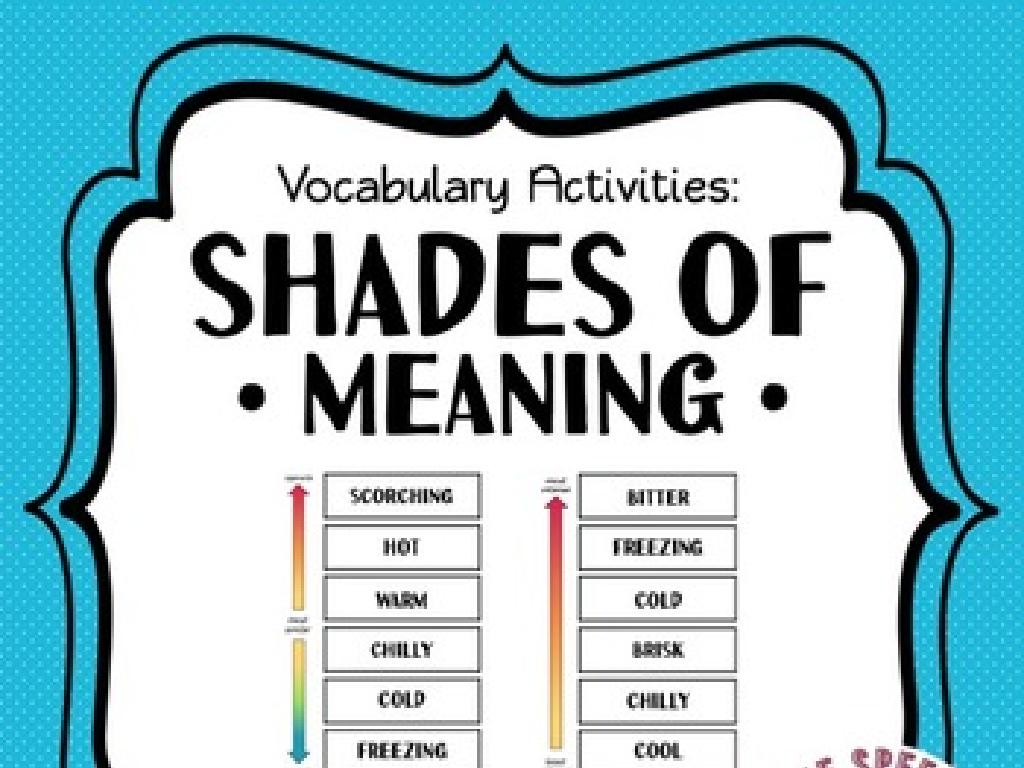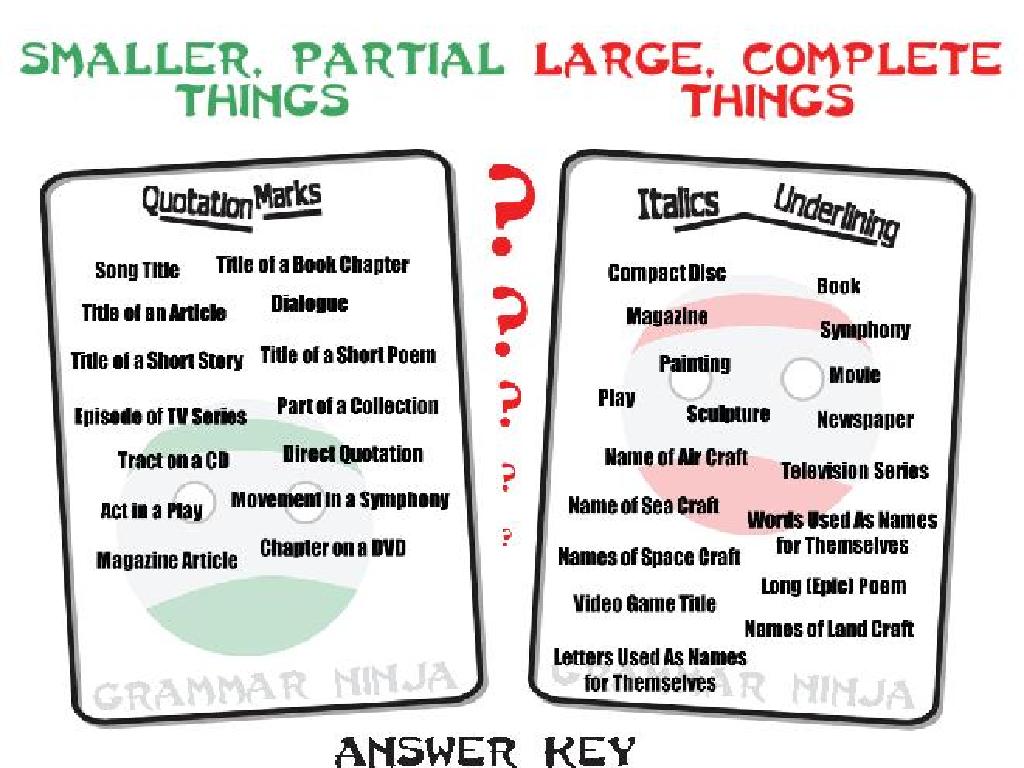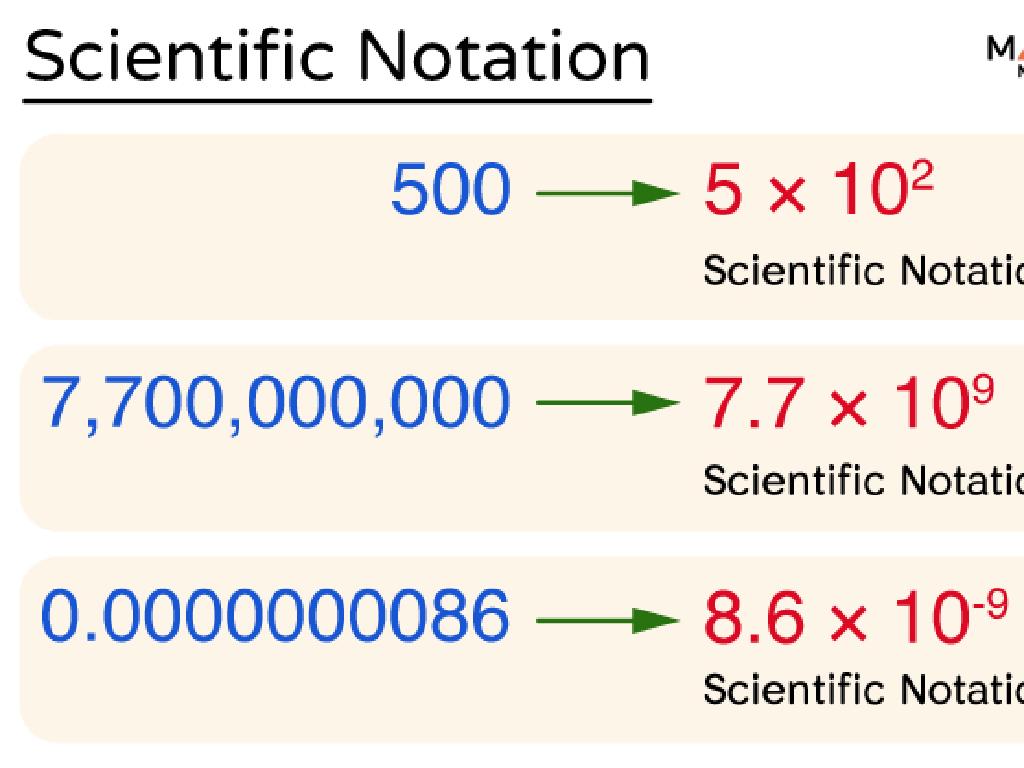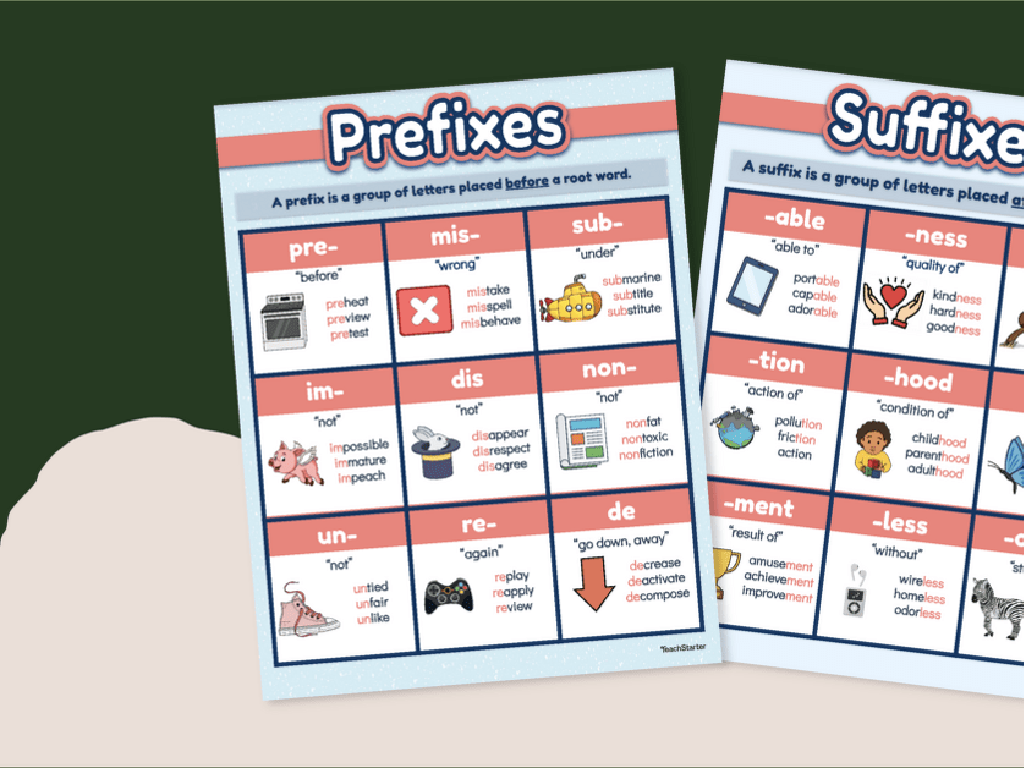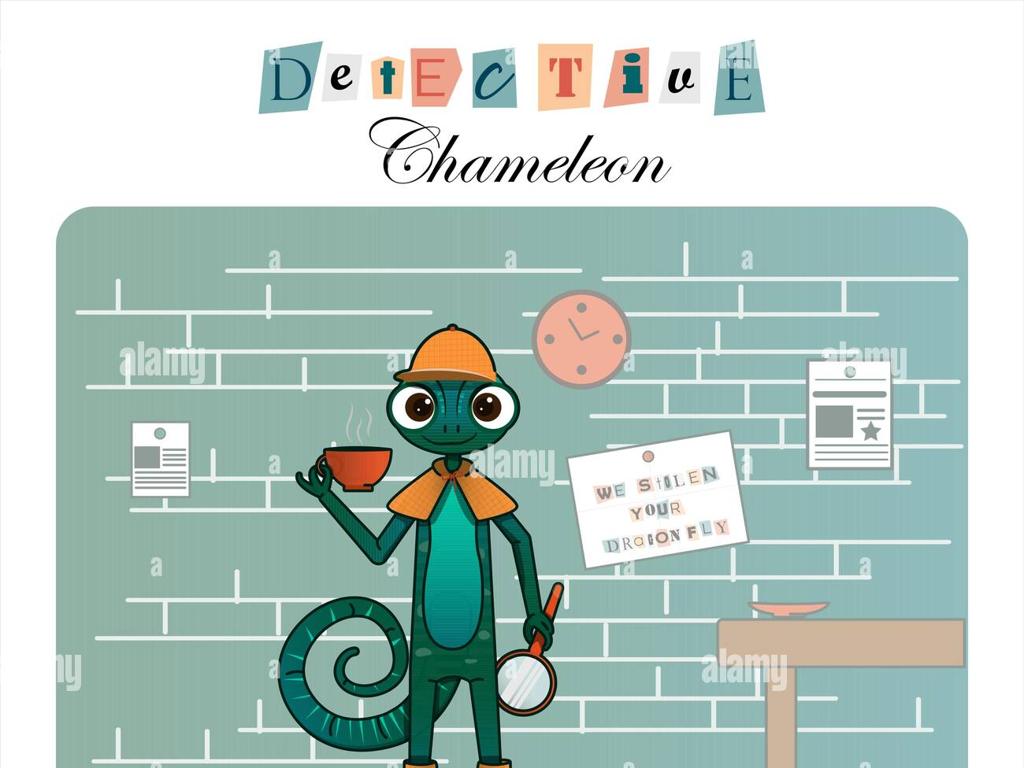Find The Percent: Tax, Discount, And More
Subject: Math
Grade: Eighth grade
Topic: Consumer Math
Please LOG IN to download the presentation. Access is available to registered users only.
View More Content
Understanding Percentages in Consumer Math
– Welcome to Consumer Math!
– Today’s Focus: Finding the Percent
– Percent in daily transactions
– Percent represents a part of a whole in daily purchases, sales, and bills.
– Applying percent to tax and discount
– Calculate tax by finding the percent of the total cost; discount is percent off the original price.
|
This slide introduces students to the concept of percentages within the context of consumer math, which is a practical application of math in everyday life. Emphasize the importance of understanding percentages as they relate to calculating taxes, discounts, and other financial transactions that they will encounter. Provide examples such as calculating the sales tax on a purchase or figuring out the discounted price during a sale. This foundational knowledge is crucial for their personal finance literacy and will be built upon with more complex consumer math concepts in future lessons.
Understanding Percentages
– Percent defined
– A percent represents a part out of 100
– ‘Per hundred’ explained
– Like a fraction, 50% is 50 per 100, or 1/2
– Visualizing percentages
– Pie charts or bar graphs show parts of a whole
– Application in daily life
|
This slide introduces the concept of percent to the students. Begin with the definition, explaining that ‘percent’ means a part out of 100, making it a way to express fractions and ratios. Illustrate this with examples: 50% as half, 25% as a quarter. Use visual aids like pie charts or bar graphs to show how percentages represent parts of a whole, which can help students visualize and better understand the concept. Emphasize the relevance of percentages in everyday life, such as calculating sales tax, discounts on purchases, and statistics in various fields. Encourage students to think of examples where they encounter percentages daily.
Calculating Sales Tax
– How to calculate sales tax
– Example: $50 item with 6% tax
– Multiply item cost by tax rate: $50 * 6% = $3
– Practice: $75 item with 8% tax
– Apply the formula: $75 * 8% = $6 tax
– Understanding tax impact on total cost
– Discuss how sales tax affects budgeting and spending
|
This slide is designed to teach students how to calculate sales tax, which is a practical skill they will use in their daily lives. Start by explaining the concept of sales tax and its purpose. Then, demonstrate the calculation using the example provided. For the practice problem, guide students through the steps to calculate the tax on a $75 item with an 8% sales tax. Encourage students to think about how sales tax affects the total cost of items they wish to purchase and how this plays into budgeting their money. Provide additional practice problems of varying difficulty to ensure understanding.
Calculating Discounts in Consumer Math
– Understanding discounts
– A discount is a reduction on the original price of an item.
– Formula for discount price
– Discount price = Original price – (Original price x Discount rate)
– Example: 15% off a $120 jacket
– Calculate 15% of $120 to find the savings, then subtract from $120.
– Practice: 10% off a $200 bicycle
– Find 10% of $200, subtract it from the original price to find the sale price.
|
This slide introduces the concept of discounts, a fundamental aspect of consumer math. Start by explaining what a discount is and why it’s offered by stores. Then, present the formula for calculating the discount price, which involves finding the percentage of the original price and subtracting it from the original price. Use the jacket example to demonstrate the calculation step-by-step. For the practice problem, guide students to apply the formula to find the discount on a bicycle. Encourage students to solve it independently, then discuss the solution as a class. This exercise will help solidify their understanding of percentages in the context of financial literacy.
More Applications of Percent
– Calculating tips with percent
– For a good service, a 15-20% tip is common.
– Compound interest in savings
– Interest on interest makes savings grow faster.
– Practice: Calculate a 20% tip
If a meal costs $40, a 20% tip is $8.
– Understanding percent applications
|
This slide aims to show practical applications of percentages in everyday life. Start by explaining how to calculate tips at restaurants, which is a common use of percentage. Then, introduce the concept of compound interest, which is how money can grow in a savings account over time due to interest being earned on the interest. Use the practice problem to apply the concept of percentage to calculate a tip for a meal. This will help students understand how to work out percentages in real-life scenarios. Encourage students to think of other situations where they might need to calculate percentages, such as sales tax or discounts when shopping.
Solving Real-World Percent Problems
– Translate scenarios to math problems
– Steps for solving percent problems
– Identify the whole, the part, and the percent. Write the percent equation and solve.
– Work through an example together
– If a sweater costs $50 and is on sale for 20% off, how much is the discount?
– Practice with a sample problem
– Find the final price after a 15% discount on a $40 game.
|
This slide aims to equip students with the skills to translate real-world scenarios involving percentages into solvable math problems. Begin by explaining how to identify the key elements in a word problem: the whole, the part, and the percent. Then, demonstrate the steps to set up and solve a percent equation. Use a relatable example, such as calculating discounts on clothing or games, which they might encounter in daily life. After walking through the example, provide a practice problem for the students to solve independently, reinforcing the concept. Encourage students to verbalize their thought process as they work through the problems to solidify their understanding.
Class Activity: Percent Scavenger Hunt
– Search for percentage-labeled items
– Calculate real values from percentages
– Use the formula: actual value = percentage × original value / 100
– Present findings to the class
– Reflect on the activity
– Think about how percentages affect daily purchases
|
This interactive class activity is designed to help students apply their knowledge of percentages to real-world contexts. Students will search for items within the classroom or school that have percentage labels, such as books with discounts or food items with nutritional content labels. They will then calculate the actual values that these percentages represent, using the formula provided. After calculations, students will present their findings to the class, explaining how they applied the percentage formula. Encourage students to reflect on how understanding percentages is important for making informed decisions about purchases and consumption. Possible activities include finding the final price after a discount, calculating the tax on a product, or determining the percentage of a nutritional component in a food item.
Wrapping Up: Percentages in Daily Life
– Recap: Finding the percent
– Percentages in everyday use
– Understanding sales tax, discounts, and tips are essential for smart shopping and dining.
– Homework: Worksheet practice
– Complete problems on calculating tax, discount, and tips based on today’s lesson.
– Apply knowledge to real-life scenarios
– Use what we’ve learned to make informed decisions when shopping or eating out.
|
As we conclude today’s lesson, remind students of the key concepts and formulas for finding percentages. Emphasize the practicality of this knowledge in everyday situations such as shopping, where calculating discounts and sales tax is common, or in restaurants when determining the tip amount. For homework, students should complete the provided worksheet which includes a variety of problems to reinforce their understanding of how to calculate tax, discount, and tips. Encourage them to approach these problems by considering real-life scenarios where they would need to use these skills. This will help solidify their understanding and show them the value of math in their daily lives.

